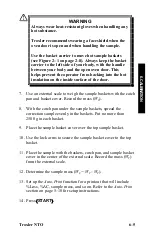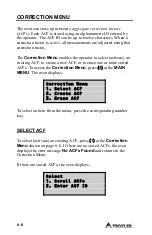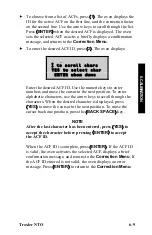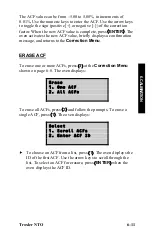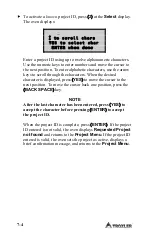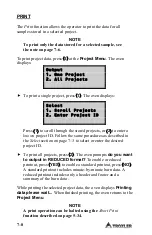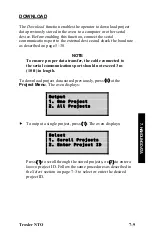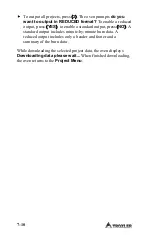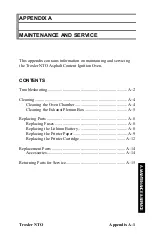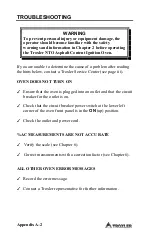
Troxler NTO
6–19
6. CALI
BRA
TION
f
If the number of calibration points is greater than
2
, the oven
continues to request each mass until all calibration points are
complete. The oven then displays:
deg of freedom = X
CC = X.XXXXX
SEE = X.XXXXX
Press Enter
where:
CC
= Correlation coefficient, which indicates the
strength of the relationship between two
variables. In this case, the two variables are the
mass placed on the scale and the corresponding
response of the scale.
Correlation coefficients are always between –
1
and
+1
. A value close to
0
indicates a weak
relationship between the variables. If two
variables have a
negative
linear relationship (one
variable increases as the other decreases), their
correlation coefficient is close to
–1
. If two
variables have a
positive
linear relationship (one
variable increases as the other increases), their
value is close to
+1
. In an ideal scale calibration,
the
CC
value would be close to
+1
.
SEE
= Standard error of estimate, which is a measure
of the linearity of the data used to calibrate the
scale. The more linear the scale calibration data,
the smaller the value of
SEE
. In an ideal scale
calibration, the
SEE
value would be close to
0
.
Press
〈
ENTER
〉
. The oven then asks
do you want to accept
this calibration?
Press
〈
YES
〉
to accept the calibration.
The oven stores the scale
calibration and returns to the
Scale Menu
.
To ensure that the calibration conforms to the requirements of
AASHTO M 231 and ASTM D 4753, verify the scale as described
on page 6–15 using all of the masses used during the calibration.
Summary of Contents for NTO 4730
Page 10: ...x LIST OF TABLES Table Title Page 4 1 Oven Keys 4 3 5 1 Recommended Minimum Burn Times 5 6...
Page 30: ...2 10 NOTES...
Page 90: ...5 36 NOTES...
Page 110: ...6 20 NOTES...
Page 136: ...Appendix A 16 NOTES...
Page 148: ...Appendix C 6 NOTES...
Page 156: ...Index 8 NOTES...

